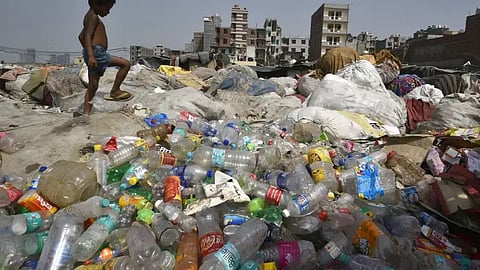

When Prime Minister Narendra Modi announced a net zero carbon emission by 2070 at COP26 in 2021, many expected that India would finally take the issue of pollution seriously. When the Swachh Bharat Abhiyan Tax was imposed, Indians happily accepted it as they wanted their nation clean and pollution-free. However, a study conducted by the University of Leeds with the help of AI has exposed India's dismal infrastructure and its inability to treat plastic pollution. Leeds University Researchers used A.I. to model waste management in more than 50,000 municipalities around the world. This model allowed the team to predict how much waste was generated globally and what happens to it. Their study, published in the journal Nature, calculated a staggering 52 million tonnes of plastic products entered the environment in 2020 – which, laid out in a line, would stretch around the world over 1,500 times. The study also identified Plastic Pollution hotspot and a worry sign for India emerged.
The study outlined India as the biggest contributor in terms of plastic pollution, followed by Nigeria and Indonesia. Earlier, the list was topped by China, now it is at number 4. hence, the study lauded China's effort to curb the plastic water pollution. Below is what the study found-
"Largest amount (9.3 Mt year−1 [6.5–12.7]) emitted by India, equivalent to nearly one-fifth of global plastic emissions. In contrast to previous plastic pollution models that positioned China as the world’s highest plastic polluter5,8, it is ranked fourth in our results, with emissions of 2.8 Mt year−1 [2.1–3.7], less than Nigeria (3.5 Mt year−1 [2.6–4.6]) and Indonesia (3.4 Mt year−1 [2.5–4.3]).
India reports that its dumpsites (uncontrolled land disposal) outnumber sanitary landfills by 10:1 and, despite the claim that there is a national collection coverage of 95%, there is evidence that official statistics do not include rural areas, open burning of uncollected waste or waste recycled by the informal sector. This means that India’s official waste generation rate (approximately 0.12 kilograms per capita per day (kg cap−1 day−1)) is probably underestimated and waste collection overestimated. Our model corrects for flows missing in officially reported statistics, resulting in a waste generation rate for India of 0.54 kg cap−1 day−1 [0.39–0.73], which is similar to and between other comparable estimate."
In layman's language, India produces 9.3 million tonnes of plastic waste a year, far more than double the next big-polluting nations. According to researchers at the University of Leeds in the UK, the world creates 57 million tonnes of plastic pollution every year and spreads it from the deepest oceans to the highest mountaintop to the inside of people's bodies. The study also said more than two-thirds of it comes from the Global South.
Dr Costas Velis, School of Civil Engineering, was quoted by the University of Leeds saying, "This is an urgent global human health issue — an ongoing crisis: people whose waste is not collected have no option but to dump or burn it: setting the plastics on fire may seem to make them ‘disappear’, but in fact the open burning of plastic waste can lead to substantial human health damage including neurodevelopmental, reproductive and birth defects."
The study also outlined that in 2020 roughly 30 million tonnes of plastics — amounting to 57% of all plastic pollution — was burned in homes, on streets, and in dumpsites, without any environmental controls in place. See the graph prepared in the study below-